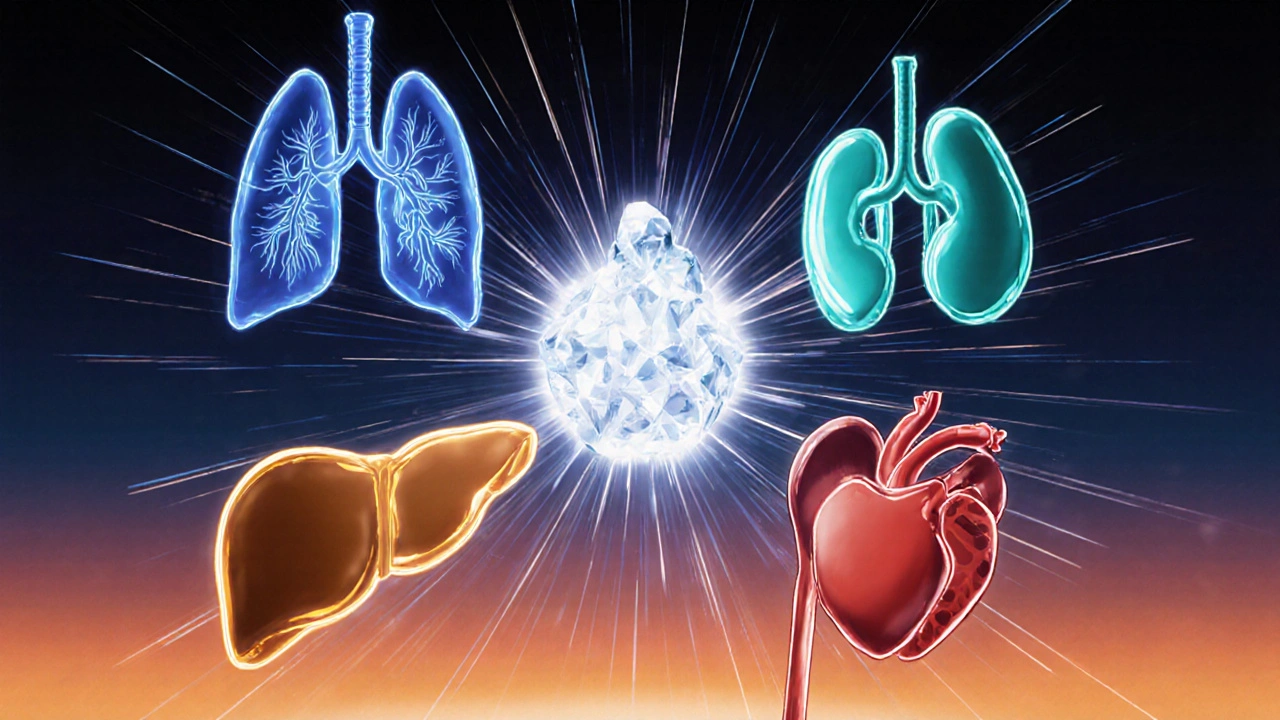A deep dive into pirfenidone’s anti‑fibrotic action, its approved use for IPF, and emerging evidence for treating systemic sclerosis, liver cirrhosis, renal fibrosis and more.
IPF (Idiopathic Pulmonary Fibrosis) Overview
When dealing with IPF, Idiopathic Pulmonary Fibrosis, a chronic and progressive lung disease marked by scar tissue buildup in the alveoli, the first step is to grasp why it matters. IPF is not just another cough; it is a specific form of lung scarring that steadily reduces oxygen exchange, leading to breathlessness even during light activity. The word “idiopathic” signals that doctors can’t pinpoint a single cause, which makes early detection crucial. Because the disease advances silently, many patients only learn about it after months of declining stamina. Understanding IPF’s hallmark features helps you recognize when a routine check‑up might need a deeper look.
Key Concepts and Management
IPF sits under the broader umbrella of pulmonary fibrosis, a group of interstitial lung diseases where fibrotic tissue replaces healthy lung parenchyma. While all pulmonary fibrosis shares the scar‑formation process, only IPF meets strict criteria: a usual interstitial pneumonia pattern on imaging, no identifiable environmental exposure, and exclusion of connective‑tissue disease. Diagnosing IPF requires a high‑resolution CT scan (high‑resolution CT, a detailed imaging technique that reveals the characteristic honey‑comb pattern of fibrosis) because a regular X‑ray often misses subtle changes. Once HRCT confirms the pattern, doctors may add lung function tests and, if needed, a surgical biopsy to rule out mimickers. Treating IPF revolves around two main strategies: slowing the scar‑formation and managing symptoms. Antifibrotic medication, drugs such as nintedanib and pirfenidone that target cellular pathways driving fibrosis has become the cornerstone of care; clinical trials show they can reduce the rate of decline in forced vital capacity by about 50 %. These meds don’t cure IPF, but they buy valuable time and improve quality of life. Alongside drugs, pulmonary rehabilitation, oxygen therapy, and vaccination against flu and pneumonia are essential to keep the lungs as functional as possible. For patients whose disease reaches an end‑stage, lung transplantation offers a definitive solution, restoring near‑normal breathing capacity. However, transplant eligibility depends on age, overall health, and donor availability, so early referral to a transplant center is advisable. Putting it all together, IPF presents a complex puzzle where imaging, medication, and specialist care intersect. You’ll find articles below that walk through each piece: how lifestyle changes can lower risk, the latest drug comparisons, what to expect from a CT scan, and real‑world tips for navigating transplant evaluation. Whether you’re a newly diagnosed patient, a caregiver, or a health professional seeking the latest updates, the collection ahead gives you actionable insights to manage this challenging condition effectively.

